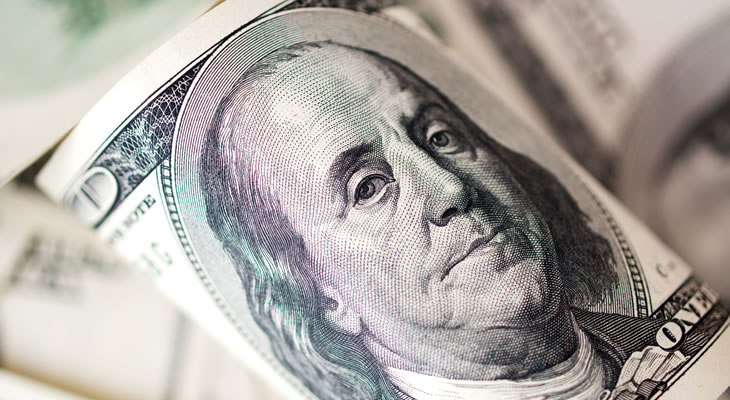GBP/USD Exchange Rate Weakens on Stubbornly-High PCE Inflation
The Pound US Dollar (GBP/USD) exchange rate is weakening today in the wake of persistently high US core inflation, elevating Federal Reserve rate hike bets.
At time of writing the GBP/USD exchange rate is around $1.2670, a 0.34% slump from this morning.
US Dollar (USD) Buoyed by Elevated Rate Hike Bets
The US Dollar (USD) is finding renewed strength today as the latest economic data contradicted poor figures from earlier in the week.
After GDP growth figures disappointed, along with declining JOLTs job openings, USD investors were wary of the latest releases. However, both core and inflation PCE readings, the Fed’s preferred measure of inflation, fell in line with expectations and pointed to both a tight labour market and stubbornly high inflationary pressures.
The latest core PCE price index increased to 4.2% from 4.1%, allowing the Fed more breathing room before opting to cut interest rates. Meanwhile, initial jobless claims decline to 228,000 vs 235,000 expected. Marking the lowest level in four weeks, unemployment benefits claimants fell and reignites claims that the labour market remains tight.
Looking ahead, the latest non-farm payrolls could further play a role in swaying the narrative from a resiliently tight labour market and weaken the ‘Greenback’. An expected slowdown in job creations could weigh on the US Dollar, but if the jobless rate holds at 3.5%, USD investors could cheer on the prospect that the Fed could keep rates elevated for longer.
Pound (GBP) Undermined by Recession Risks
Meanwhile, the Pound (GBP) is struggling for demand amid a lack of major economic data. A hawkish speech from Bank of England (BoE) failed to lift investors’ spirits as recession fears grow.
BoE Chief Economist Huw Pill spoke at an event organised by the South African Reserve Bank this morning, citing the need to bring inflation back to target. Hawkish comments did little to cheer investors, however, as fears of interest rates to remain elevated for longer sapped demand. Pill said:
‘The key element is that we on the MPC (Monetary Policy Committee) need to see the job through and ensure a lasting and sustainable return of inflation to the 2% target.’
‘At present, the emphasis is still on ensuring that we are – in the words of the MPC’s last statement – sufficiently restrictive for sufficiently long to ensure that we have that lasting return to target.’
Unable to offset concerns of a recession, improving business confidence did little to inspire Sterling. The monthly survey from Lloyds Bank reported that UK business confidence hit its highest level in over 18 months. Hopes of inflationary pressures easing, as well as the central bank nearing the end of their hiking cycle, optimism improved.
Looking ahead, the final manufacturing PMIs are due to print tomorrow and if the final readings match the flash estimates, it would signal the sharpest drop in factory activity since 2020. The Pound could struggle further on waning economic confidence once more.


Comments are closed.